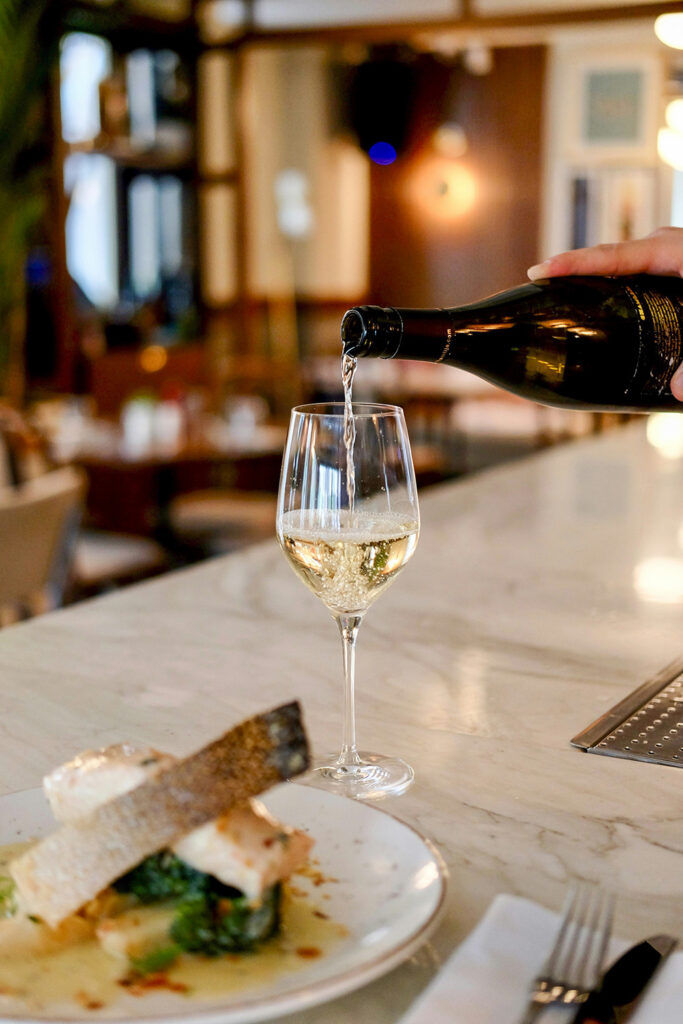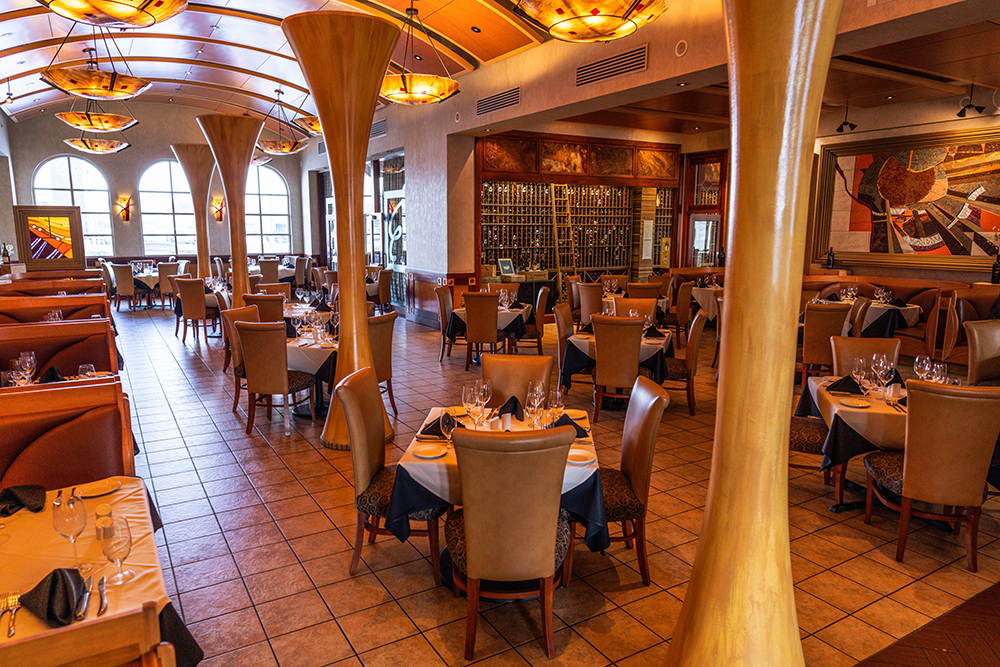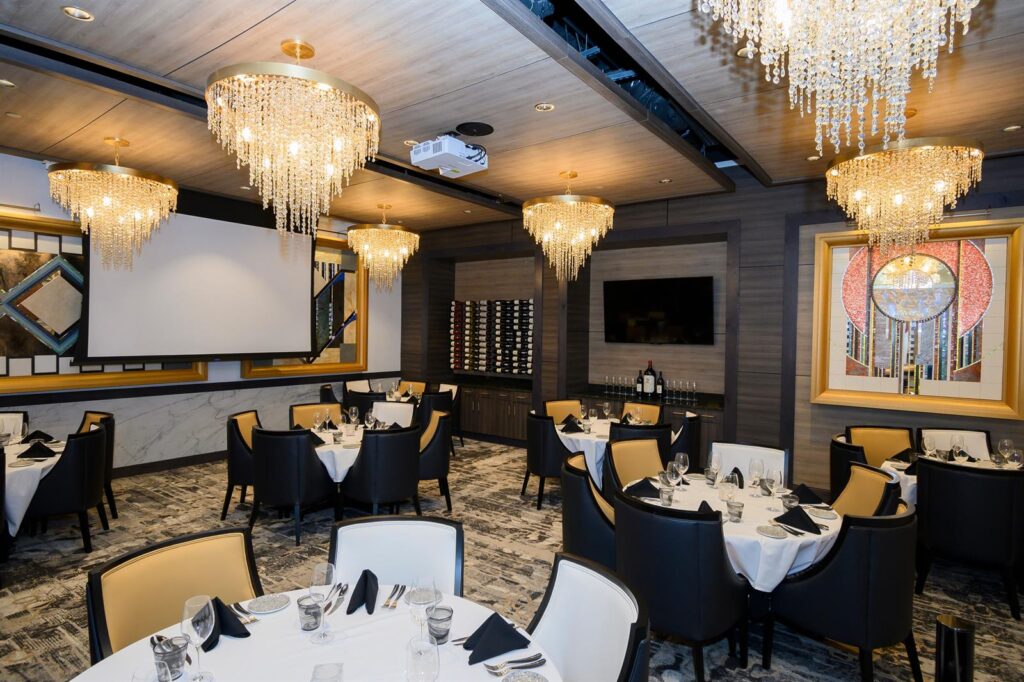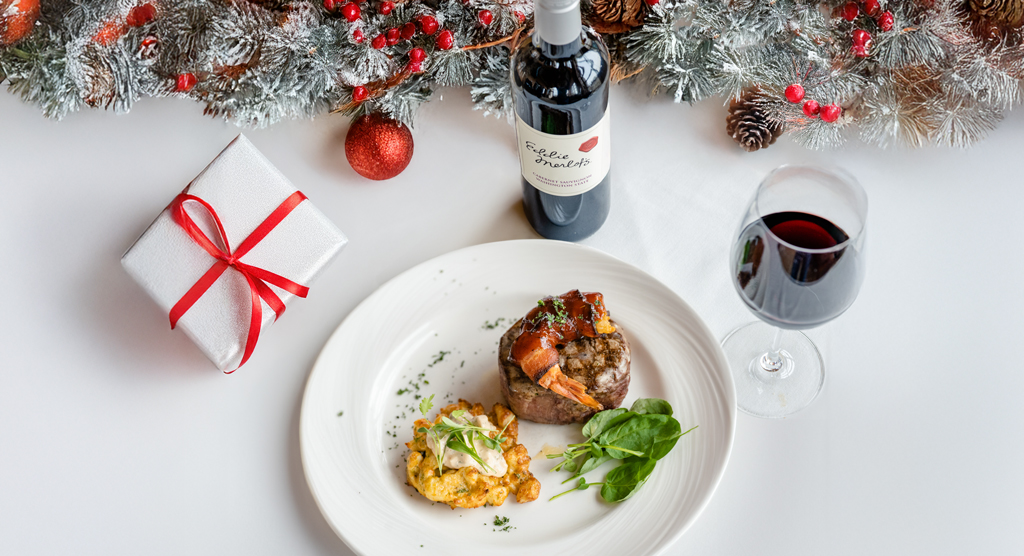
The first sip of wine at dinner often feels like a pause button—an exhale, a shift in tempo, a reminder that good food lies ahead. Still, the moment leading up to that sip can feel uncertain: a leather-bound list, a sea of unfamiliar names, and the quiet pressure to choose well.
But ordering wine doesn’t have to feel like passing a test. Instead, it can be about presence: leaning back in your chair, glass in hand, and letting the evening unfold.
Whether you’re picking for yourself or leading a table, this guide is your permission to relax, trust your palate, and discover how to order wine that fits the moment (and the meal).
Don’t Overthink It—Wine Should Be Enjoyable
There’s a reason why wine has lingered at the dinner table for centuries: It’s a ritual of enjoyment, not expectation. While lists of wine for restaurants can feel dense or overly formal, choosing doesn’t need to be an exercise in expertise.
Despite uncertainty, the best place to begin isn’t with a rule, but with a reminder: Good wine is not about getting it perfect. Instead, pick a wine you’ll enjoy–because the best bottle for your table is the one you’ll want to finish.
You Don’t Have to Be a Sommelier to Make a Great Choice
A wine list can feel like a menu in another language: names you don’t recognize, vintages you don’t know, and regions you’ve never been to.
But most people ordering wine at a restaurant aren’t sommeliers, so you’re not expected to be one, either. Rather than memorizing grapes or vintages, trust that you already have the most essential ingredient: your preferences.
Trust Your Preferences
Think back to what you’ve liked in the past. Use what you remember as your compass:
- Was it dry and peppery?
- Crisp and citrusy?
- Smooth with a hint of vanilla?
- Bold and jammy?
Whether you lean red or white, dry or sweet, understanding your preferences is an invaluable part of knowing how to order wine at restaurants.
Tips for Choosing the Right Wine at Dinner
The right wine choice can enhance (and elevate) your meal. It lifts flavors, draws out textures, and sometimes, surprises you in ways a menu might not specify.
But again, choosing the right wine doesn’t require expertise. Just keep these few grounding principles in mind:
Consider What You’re Eating
One of the simplest ways to narrow your wine choice is to consider the weight of the flavor of your food. Think in balance:
- Go bold with bold flavors – Hearty dishes like steak, lamb, or anything umami-rich (think mushrooms or truffle sauces) shine alongside full-bodied reds like Cabernet Sauvignon, Syrah, or Malbec.
- Keep it light for lighter fare – For seafood, chicken, or vegetable-driven plates, reach for a crisp white, such as Sauvignon Blanc or Chardonnay—something bright enough to lift without overwhelming.
- Match richness with texture – Creamy sauces or buttery dishes love wines that echo that smoothness. Try a lightly oaked Chardonnay or a delicate Pinot Noir with low tannins.
- Balance spice with freshness – Dishes with heat or global flair—Thai, Indian, or Mexican—pair well with off-dry Rieslings or a glass of bubbles to cool the palate.
Your goal? A pairing where neither the wine nor the dish overshadows the other—they should meet halfway.
Don’t Be Afraid to Ask Questions
You don’t have to navigate wine lists alone. Asking questions—about grape varietals, regions, flavor profiles, or pairings—is not only welcome, but expected. In fact, some of the best wine selections start with a simple, honest question: What would you recommend with this?
Be honest about what you like, too. You can say things like, “I usually drink Pinot Noir” or “I’m looking for something light and fruity.”
The more you share, the better your server can guide you.
Ask for a Taste When Available
If something on the wine list intrigues you, but you’re unsure how it will land on your palate, ask for a taste.
At many restaurants (especially those with a thoughtful wine program), your server can pour a small sample before you commit to a glass or bottle.
Red or White? Think About Flavor, Mood, and Occasion
Choosing between red and white wine (or something in between) deserves a moment of reflection. Whether you’re craving bold and broody or light and refreshing, the key to an excellent selection is understanding each wine’s character.
Red Wine Basics
Red wine is known for its depth, fuller body, structured tannins, and a lingering richness that makes it a natural partner for bold, savory dishes. Popular varietals include:
- Cabernet Sauvignon — Bold, dry, and full-bodied
- Merlot – Smooth, round, and fruit-forward
- Pinot Noir – Lighter, more delicate, with bright acidity
- Syrah — Spicy, dark, and intense
Each varietal offers its own signature, but across the board, red wines tend to share a palette of flavors such as:
- Black cherry and ripe plum
- Cracked pepper, clove, or vanilla
- Smokiness of a charred barrel
These bold profiles deserve dishes with structure and presence. Think:
- Grilled steaks like filet mignon or ribeye
- Roasted lamb or duck
- Tomato-based pastas layered with herbs
Next, let’s shift to the crisp, refreshing contrast of white wines and how they shine.
White Wine Basics
If red is richness, white wine is clarity—clean, refreshing, and capable of surprising complexity. White wine lends itself to lighter fare and leisurely beginnings, where acidity can awaken the palate and subtle notes echo softly behind each bite.
Like reds, white wines vary, each with a unique voice:
- Chardonnay – Rich and often buttery
- Sauvignon Blanc – Bright, crisp, and herbaceous
- Pinot Grigio – Light, dry, and delicately fruity
- Riesling – Romantic and versatile, ranging from dry to sweet
These wines speak in a slightly different register—one that’s often more floral or citrus-forward, yet still deeply expressive. Flavor notes may evoke:
- Green apple, pear, or ripe stone fruit
- Honeysuckle, jasmine, or fresh herbs
- Lemon zest or the creaminess of toasted oak
With their refreshing profile and balanced acidity, white wines pair naturally with dishes like:
- Grilled or poached seafood
- Chicken dishes with cream-based sauces
- Fresh salads, goat cheese, or vegetable-forward entrees
For moments that call for something celebratory, versatile, or unexpected, sparkling and rose offer their own kind of charm.
Sparkling or Rosé for Something Versatile
Sparkling wines and rosés are the harmonizers of the wine world: festive yet flexible, celebratory yet grounded.
Sparkling wines like Champagne, Prosecco, or Cava bring:
- Fine bubbles that cleanse the palate and elevate flavor
- Notes of green apple, brioche, citrus, or almond
- A sense of occasion—even when there isn’t one
Their natural acidity and effervescence make them ideal pairings with:
- Oysters, fried appetizers, or sushi
- Soft cheeses, charcuterie, or rich, creamy sauces
- Brunch or multi-course meals with changing flavors
Rose, on the other hand, carries the best of both worlds—white wine’s freshness and red wine’s depth. Roses often feature:
- Flavor notes like strawberry, melon, citrus peel, and a hint of minerality
- A pale blush hue that mirrors their subtlety
- Styles ranging from dry to fruity and floral
Pair a rose with meals that are layered and seasonal, like:
- Grilled vegetables, seafood paella, herbed chicken
- Summer salads, or shared plates with mixed flavors
How to Navigate a Wine List Like a Pro
You don’t need to speak fluent Bordeaux or recall soul types in Napa to make a confident wine choice. Think of a wine list as more of an invitation. With a few simple cues—where it’s from, how it’s priced, and who to ask—you can order with ease and intention.
Look for Wine Regions You Know
When the wine list feels unfamiliar, geography can be your best guide. Recognizing a region you trust can help you land on something you’ll genuinely enjoy:
- Napa Valley, California, is known for bold, fruit-forward Cabernet Sauvignon and polished Merlot
- Bordeaux, France, usually favors classic blends of Cabernet and Merlot with earthy profiles
- Mendoza, Argentina, stands out for its velvety, full-bodied Malbec
- Willamette Valley, Oregon, produces elegant, balanced Pinot Noir
Price Doesn’t Always Equal Quality
A higher price tag doesn’t always promise a better bottle. Great wine exists at every tier—it just depends on what you enjoy. When browsing a wine list by price:
- Let the food guide you – A $15 glass that pairs beautifully with your dish is worth more than a $30 one that overwhelms it.
- Explore by the glass – Wines offered by the glass are often selected for their broad appeal and value.
- Look for emerging regions – Less famous loan regions may offer exceptional quality wine at a lower price.
Still unsure? That’s precisely why your server is there—to turn uncertainty into confidence.
When in Doubt, Ask for a Recommendation
A knowledgeable server or sommelier does more than recite notes—they listen. They’ll ask thoughtful questions about your preferences, recommend bottles that align with your taste and budget, and guide you toward selections that deliver in both flavor and value.
Experience the Wine Expertise at Eddie Merlot’s
At Eddie Merlot’s, selecting the best bottle is not a test of your wine knowledge, but an invitation to enjoy, explore, and discover what delights your palate.
Our wine list is curated with intention: bold reds, crisp whites, effervescent sparklers, and everything in between. Whether you arrive with a favorite varietal in mind or simply a mood to match, our team is ready to guide you with thoughtful pairings, personal insight, and an experience that’s as relaxed as it is refined.
Reserve your table today, and discover how seamlessly wine and dining weave together at Eddie Merlot’s.




